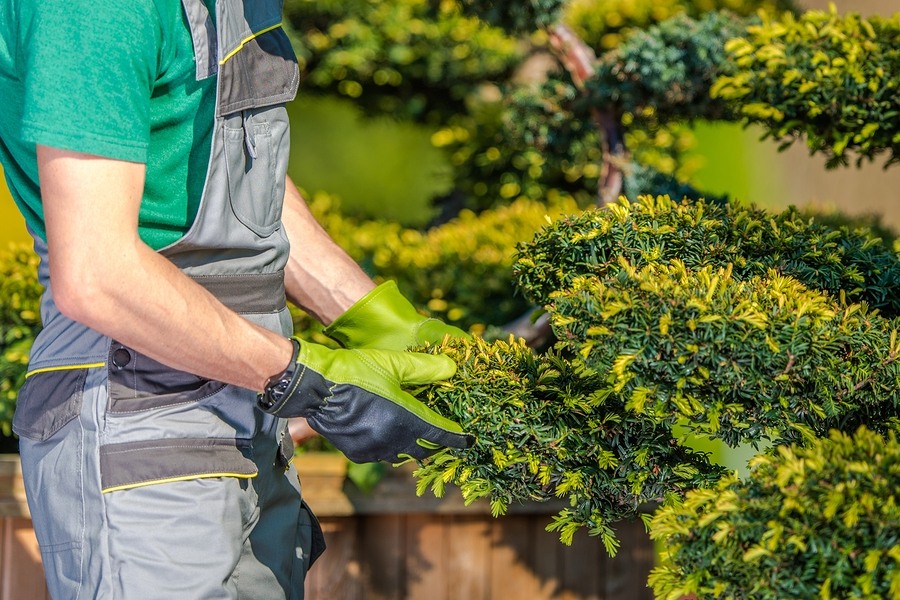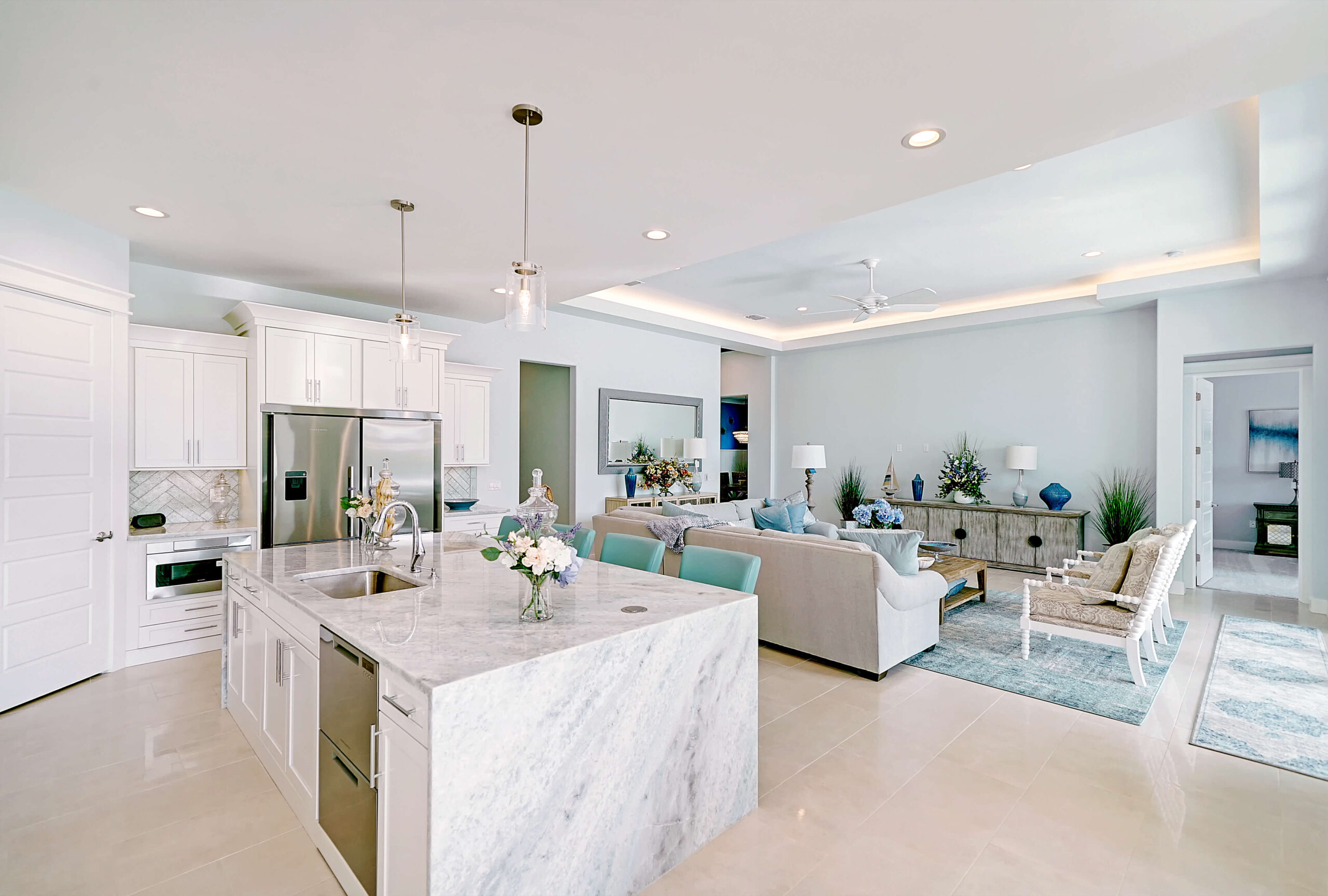While there are some great Florida-specific landscape tips to use there are seven common landscaping mistakes homeowners should always avoid. These cause a yard to look awkward, cramped, uneven, and sometimes confusing to the eye. At the very least, it can produce an amateurish effect, appearing as though it’s out-of-place and out of sync with the home it surrounds and even itself. But, by avoiding the most common landscaping mistakes, you’ll have a much better looking yard and wonderful curb appeal to enjoy.
The Five Basic Landscape Design Elements
Landscaping is done within the parameters of five basic elements: color, texture, form, line, and scale. Color is divided into four categories: primaries (red, blue, yellow), secondary (green, orange, violet), tertiary (a mixture of primary and secondary, and, neutrals (white, silver, and grey). In general, texture is represented by a mix of fine and coarse textures to break up any monotony. Forms come in six types: oval, upright, columnar, weeping, spreading, and broad spreading.
…we can find pretty much anything we want on the Internet and from watching a huge variety of do-it-yourself cable programming. Yes, there is so much data at our fingertips that it doesn’t take too long before we have the confidence to believe we can do everything ourselves. One of the areas where folks feel most tempted to bypass the advice of professionals is in the creation of gardens and landscape design. It’s very true that gardening is an extremely rewarding endeavor and the feeling of accomplishment that comes with creating a beautiful space is unmatched, but there are still some key guidelines to consider. —University of Tennessee Extension
Line is typically found in features like pavers winding through an outdoor space or surrounding a fountain. It can also be represented in other ways but it’s all about direction and it can easily been overdone. While line is greatly important, right angles are not the best fit for residential landscapes. Scale is in relation to balance and should be in-line or relative to the size of your home. In other words, a landscape should not overwhelm but complement, your house.
7 Common Landscaping Mistakes Homeowners should Avoid
The fact of the matter is, bad landscaping will not only hurt your house’s curb appeal, it will present a real challenge when it comes time for resale. It only takes people 7 to 10 seconds to form an impression of a property the first time they see it. What’s more, just one out of every ten people are able to imagine a property in a different way than it appears. So, it’s clear why proper landscaping is so important. Here are the seven most common landscaping mistakes homeowners should avoid:
- Little to no planning. Without sufficient planning, you’ll likely put a hodgepodge together that doesn’t look natural and presents poor aesthetics. Take time to plan your landscape before diving into installation and the effort will certainly be worthwhile.
- Planting too near trees. It’s unfortunate but factual — planting too close to trees is a bad idea. Roots do wreak havoc and it isn’t always good for plants to grow and thrive. Besides these reasons, there’s really no need to plant right next to trees.
- Too much of the same thing. It is very tempting to plaster your landscape full of your favorite flowering plants because it’s just so beautiful. But, doing so is a huge mistake because it will dominate your design and drown out everything else. It’s also downright boring to do this, so don’t deluge your yard with the same thing over and over again.
- Too little space between. Sure, it’s completely okay to cluster plants together as the alternative leaves too much space between single plants. But those clusters should not be clustered together. Plant clusters but still leave space between them so they do not appear choked and overgrown.
- Planting the wrong plants. Poisonous plants, messy trees, and out of zone plants are all big time no-nos. Learn your zone (Sarasota County is USDA Plant Hardiness Zones: 9a, 9b, 10a, 10b) and choose plants and trees that thrive in these zones.
- Letting weeds take over. When you install your landscape plants and features, you aren’t finished with the project. While the hard work is essentially over, maintenance begins and continues. Don’t let weeds ruin your pretty landscape.
- Forgetting about critters. Another thing you need to do is to protect your landscape from harmful insects and pests. Learn which are most problematic and use preventative measures to keep them out of your yard so you can enjoy your outdoor living space.
If it’s time to update your landscaping, don’t hesitate to contact us. We are a full-service, professional landscape design company and serve all of Sarasota, including near Bayfront Drive, around Rolling Green Golf Club, along Longboat Club Road, and elsewhere.



